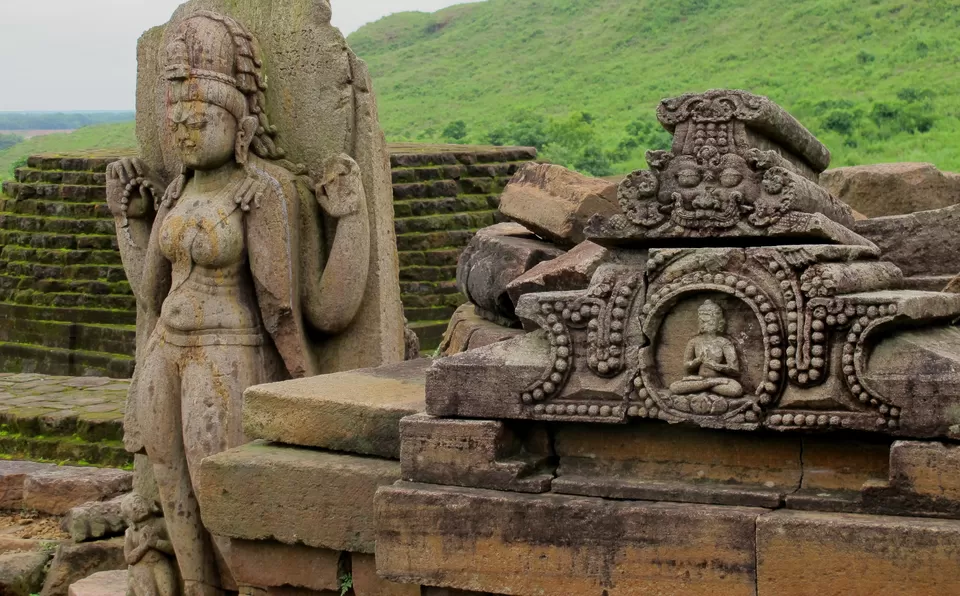The Bhitarkanika Mangroves (made of Oriya words bhitar, meaning interior and kanika, meaning exceptionally beautiful) is the world's largest and most relevant nesting ground for the endangered Olive Ridley Turtles. Every year, nearly a million Olive Ridley Turtles lay over 84 million eggs on the Gahirmatha Beach, which lies along the Bhitarnika Mangrove Forest, inside the Gahirmatha National Park.

After arriving in Bhubaneswar, hire a taxi to Ratnagiri. If you make prior bookings, you can have the hotel arrange a pick-up from the airport. Spend this day resting, or head out for light exploratory walk around the area.

Spend this day either taking another boat safari or a walking tour of the Bhitarkanika mangroves or head out to the Pentha Beach, which is 10km from the sanctuary. Take a detour from Rajnagar on the Bhubaneswar-Cuttack route to reach the Pentha Beach. Pentha is part of the 35km long Gahirmatha Beach where Olive Ridley Turtles nest in large numbers. You can also visit the hatchery developed by the Forest Department for the conservation of these eggs.
While exploring remote areas, make sure you travel responsibly and follow sustainable practices. To know more about how to reduce your negative impact on environment while travelling read: A Dummies Guide To Responsible Travel: Indian Edition.
Where are the Bhitarkanika Mangroves
Situated between Paradip and Chandipur in Odisha, the Bhitarkanika Mangrove Forest is a natural and wildlife reserve that is home to over 55 species of mangroves, 170 species of birds and a large population of saltwater crocodiles, hawksbill and leatherback turtles, Bibron's soft shelled turtle and also the endangered king cobra and the Indian rock python.

Despite being one of the most treasured natural reserves in the world, there is not a lot of awareness about Bhitarkanika's conservation efforts. The mangrove forest, which once had the world's largest saltwater crocodile was nearly lost at the hands of bad governance in the early half of the 20th century. Fortunately, after the abolishment of the zamindaari system in India, the Bhitarkanika mangroves were declared a wildlife sanctuary in 1975. In the later years, more area was allotted to the conservation of its unique flora and fauna, resulting in a 672 square kilometre national park by 1998.

Nature and wildlife enthusiasts find their way to the estuarine confluence of the Brahmin, Baitarani and Patasala rivers at Bhitarkanika in the hopes of catching a glimpse of fascinating marine mammals such as saltwater crocodiles and turtles, as well as terrestrial animals such as leopards, jackals, hyenas, porcupines, otters and fishing cats. This mangrove forest in India is also a dream come true for birdwatchers as migratory and resident birds such as Asian Openbills, six species of kingfisher, five species of egrets and the black-headed ibis can be spotted here.
Entry points
There are two main entry points to the Bhitarkanika National Park: Khola and Gupti villages. Pick your entrance point depending on where in Odisha are you coming from. Entry permits are available at both checkpoints. Boats for transfers within the sanctuary are also available from both entry points.

Best Time To Visit
The Oliver Ridley Turtles arrive between October and January to lay eggs and leave in May, heading towards Sri Lanka in the south. The first nesting period is around January and February and the second mass nesting happens sometime between March and April.
If you are interested in birdwatching, then the herons migrate to Bhitarkanika in early June. Winters at Bhitarkanika can get quite cold as the temperature ranges from 15-27 degree Celsius. Even if you are travelling in the summers, make sure to carry a light jacket as the forest gets chilly after sunset.
Avoid visiting this mangrove forest in India between April and May and October and December as the area is prone to cyclones and high tidal waves.
Where to stay
Sand Pebbles Jungle Resort: Rs 5,000 for a double occupancy Swiss tent.
Village Resort: Rs 4,500 for a double occupancy cottage.
Accommodation is also available at the forest rest houses in and around the park at affordable prices. For bookings contact the Divisional Forest Officer, Rajnagar (Ph: 06729-8460).
How to Reach Bhitarkanika Mangroves
By Air – The Bhubaneswar airport is 190km from the Bhitarkanika mangroves.
By Rail – The nearest railway station to Bhitarkanika is in Bhadrakh, approximately 77km away.
By Road – The most convenient route to reach Bhitarkanika is to drive from Bhubaneswar via Rajnagar, which takes almost four to five hours.
There are several cultural attractions en route to Bhitarkanika from Bhubaneswar, here's an itinerary for 4 days and 3 nights that ensures a wholesome experience of the destination and places around it.
The ancient Buddhist monastery or mahavihara of Ratnagiri was built by the Gupta king Narasimha Baladitya and served as an important centre in the development of the Kalachakratantra. Combined with Lalitgiri and Udayagiri, the three sites make the Golden Triangle of Odisha.
Spend the entire day travelling back in time at the archeological sites of Ratnagiri, Lalitgiri and Udaygiri. Along with ancient Buddhist and Hindu sculptures, the sites also have many cultural artefacts such as ancient terracotta seals, bronze sculptures and ancient coins from the Gupta period. Also visit the the Langudi Hill, renowned for housing 34 rock-cut Buddhist stupas.
After sightseeing, head to Pushpagiri to spend the night.

Set out for Khola, entry point of the Bhitarkanika mangroves, early in the morning as the drive is up to 4 hours long. Spend the day taking a boat safari through this mangrove forest in India and stay the night.
Frequent Searches Leading To This Page:-
solo trip in odisha, paragraph on a visit to odisha,offbeat places in odisha, odisha tour packages in budget, odisha cheap holiday package

